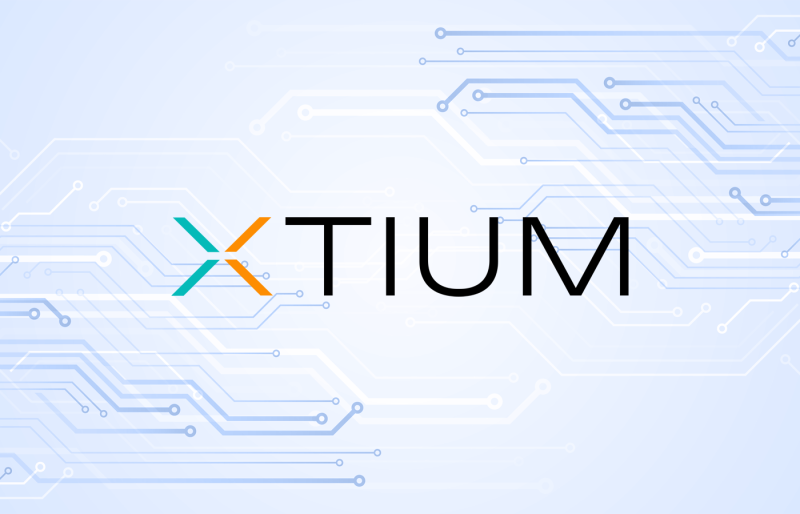Proactive Cybersecurity in a Threat-Filled World
Navigating the complexities of cybersecurity and insurance can be challenging. We've simplified the process by collaborating with trusted industry leaders like XTium, Barracuda Networks and Partners Risk Insurance. Together, we offer a bundled solution that includes Co-Managed XDR, DaaS, DRaaS, Cyber Insurance and more, providing your business with comprehensive protection and peace of mind.
Why Invest in a Managed Cybersecurity Solution?
24/7 Expert Monitoring
-
With the ever-evolving landscape of cybersecurity threats, our vendors proactive threat detection ensures that potential risks are identified before they can escalate into actual breaches. Utilizing advanced monitoring tools and techniques, we not only detect threats in real-time but also implement immediate response strategies to mitigate their impact. This forward-thinking approach allows us to stay one step ahead of cybercriminals.
-
Our vendors team of security experts is available 24/7 to provide real-time insights and guidance. This expertise enables us to quickly assess threats, respond appropriately, and implement necessary changes to enhance your security posture. By continuously updating our knowledge on the latest security trends and vulnerabilities, we guarantee that our response tactics remain effective and relevant, assuring our clients of a robust defense strategy.
-
By integrating proactive threat detection and real-time expertise into your security framework, our vendors can significantly lower the likelihood of data breaches. Their comprehensive approach to cybersecurity not only addresses current threats but also reinforces your defenses against future vulnerabilities. This ultimately leads to improved compliance, protection of sensitive data, and peace of mind for your business and its stakeholders.
Premium Reductions
-
Organizations can often benefit from various cyber insurance discounts by implementing robust cybersecurity measures. By demonstrating a proactive approach to security—such as using multi-factor authentication, regularly updating software, and conducting employee training on cybersecurity best practices—businesses may qualify for reduced premiums. Insurance providers often reward companies that take these steps with lower rates, reflecting a commitment to minimizing risk.
-
Actively managing and mitigating cybersecurity risks can significantly lower an organization’s risk profile. This involves conducting regular risk assessments to identify vulnerabilities, implementing strong firewalls and intrusion detection systems, and creating an incident response plan. By showcasing a comprehensive risk management strategy, organizations can not only protect their sensitive data but also present a lower risk to insurers, which can further lead to discounts on coverage.
-
By qualifying for cyber insurance discounts and lowering the risk profile, organizations can see substantial savings on premiums. These savings can be reinvested into additional security measures or other areas of the business. As cyber threats continue to evolve, organizations that prioritize cybersecurity not only protect themselves from attacks but also enjoy the financial benefits that come from being viewed as low-risk by insurers.
Complete Installation & Compliance
-
Establishing a secure configuration process is crucial for safeguarding telecommunications infrastructure. This involves setting up systems in a way that minimizes vulnerabilities and ensures all components are appropriately secured from the outset. Regular maintenance is equally important to ensure that systems remain updated and secure against emerging threats. This may include routine audits and assessments to identify potential weaknesses in the configuration.
-
Adhering to industry standards, such as those set forth by organizations like the National Institute of Standards and Technology (NIST) and the International Organization for Standardization (ISO), provides a framework for security best practices. Compliance with these standards helps organizations ensure that their configuration processes are robust, consistent, and effective in protecting sensitive data. It also fosters trust with clients and stakeholders by demonstrating a commitment to maintaining high-security protocols.
-
A well-defined configuration management strategy significantly reduces the risk of misconfiguration, which can lead to serious security breaches. By implementing automated tools and processes for configuration tracking and change management, organizations can identify and correct potential misconfigurations before they become problematic. Additionally, training staff on secure configuration practices cultivates a culture of awareness and diligence, further mitigating the likelihood of human error leading to vulnerabilities.
Vendor Spotlight: A Powerful Alliance for Your Security
XTium is a leading provider of cloud-based communications and IT solutions that empower businesses to work more effectively and securely. They offer a comprehensive suite of services, including cloud computing, unified communications, contact centers, and cybersecurity solutions, all designed to streamline operations and enhance productivity.:
-
These solutions provide businesses with a secure, scalable, and cost-effective way to access their data and applications from anywhere. XTium offers a variety of cloud-based infrastructure services, including virtual desktops, virtual servers, and disaster recovery.
-
XTium’s cloud-based solutions help businesses to improve productivity and collaboration by providing users with access to the tools they need from any location. XTium’s solutions also include a variety of features that help teams to work together more effectively, such as file sharing, video conferencing, and chat.
-
XTium takes security seriously. Their cloud-based solutions are protected by a variety of security measures, including multi-factor authentication, encryption, and intrusion detection.
-
XTium’s Extended Detection and Response (EDR) service helps businesses to proactively identify and respond to cyber threats. EDR uses advanced analytics to monitor your network for suspicious activity and automatically respond to threats.
-
XTium’s 24/7 Threat Monitoring and Response service provides businesses with round-the-clock security monitoring and response. This service helps to ensure that your business is protected from cyberattacks and that any incidents are quickly identified and addressed.
-
XTium’s Advanced Threat Intelligence service provides businesses with access to the latest threat intelligence data. This data can be used to help businesses identify and mitigate potential threats.
-
XTium’s Business Continuity and Disaster Recovery (BC/DR) services help businesses to protect their data and applications in the event of a disaster. BC/DR services include data backup, disaster recovery planning, and application recovery.
These are just some of the many cloud-based services that XTium offers. If you're looking for a cloud-based solution that can help your business improve productivity, security, and compliance, then XTium is a great option.
Partners Risk is a leading provider of cyber insurance and risk management solutions. They help businesses of all sizes understand and mitigate their cyber risks, offering comprehensive insurance coverage and expert guidance.
-
Partners Risk provides in-depth knowledge of the cyber insurance landscape, helping you navigate the complexities of policy options and select the right coverage for your specific needs. They offer a wide range of cyber insurance products to protect against data breaches, ransomware attacks, business interruption, and other cyber threats.
-
Partners Risk leverages their strong relationships with insurers and deep understanding of the market to negotiate competitive premiums on your behalf. They analyze your risk profile and advocate for the best possible terms, ensuring you receive robust protection at a fair price.
-
Partners Risk conducts thorough risk assessments to identify your organization's vulnerabilities and potential exposures to cyberattacks. This includes evaluating your IT systems, security practices, and internal controls. Their assessments help you understand your risk profile, prioritize security improvements, and make informed decisions about your insurance needs.
-
Navigating the complex world of cybersecurity compliance can be challenging. Partners Risk provides expert guidance on relevant regulations and standards, such as HIPAA, PCI DSS, and GDPR. They help you understand your compliance obligations and implement the necessary measures to protect your business and its reputation.
-
In the unfortunate event of a cyberattack, Partners Risk provides expert claims management support. They guide you through the claims process, working with you and the insurer to ensure a smooth and efficient resolution.
Partnering with Partners Risk offers a comprehensive solution to your cyber security needs. Their wide range of insurance products, expert advice, and dedicated support ensure that your business is well-protected in the face of evolving digital threats. With Partners Risk, you can focus on your core operations with the peace of mind that comes from knowing you have a trusted partner safeguarding your business from cyber risks.
Protect Your Bottom Line
With Insights Cyber Bundle
-
Implementing a system for real-time monitoring allows organizations to detect issues as they arise, enabling immediate responses to potential risks. This proactive approach minimizes disruptions and helps maintain operational integrity. By continuously analyzing data, businesses can identify patterns and trends that indicate emerging problems, allowing for quicker resolutions before they escalate.
-
Efficient monitoring and rapid response mechanisms lead to significantly reduced downtime. When issues are addressed promptly, businesses can maintain productivity and avoid the financial losses associated with halted operations. This translates not only to lower recovery costs but also to improved service delivery, enhancing overall customer satisfaction.
-
Insurance providers often reward organizations that actively manage risk with lower premiums. By demonstrating a commitment to real-time monitoring and proactive risk mitigation, businesses can negotiate better terms with insurance carriers. This approach reflects the organization’s diligence in minimizing risks, potentially leading to substantial savings on insurance costs over time.
-
A proactive stance on risk management involves anticipating potential challenges and implementing strategies to minimize their impact. This approach empowers organizations to create contingency plans and invest in preventive measures, fostering a resilient operational environment. By prioritizing risk mitigation, businesses can navigate uncertainties with confidence, reduce threats to stability, and cultivate a strong foundation for growth.
Without our Cyber Bundle
-
In today's digital landscape, organizations face significant threats from cybercriminals. Breaches can occur due to various factors, including outdated software, lack of employee training on security protocols, and inadequate cybersecurity measures. These vulnerabilities can leave sensitive data exposed, making businesses prime targets for ransomware attacks, where criminals hold data hostage in exchange for payment.
-
When a breach or ransomware attack occurs, the recovery costs can be staggering. Organizations often need to invest in forensic investigations, system restorations, and additional security measures to prevent future incidents. Furthermore, they may face legal liabilities if customer data is compromised, leading to expensive lawsuits and fines from regulatory bodies.
-
A security incident can severely impact a company’s reputation. Customers may lose trust in a brand that has suffered a breach, leading to potential loss of business and customer loyalty. Negative media coverage can amplify the damage, creating long-lasting effects on an organization's market position and profitability.
-
Following a breach, organizations may see a spike in their cybersecurity insurance premiums. Insurers assess risk based on a company’s cybersecurity posture; hence, businesses that have experienced incidents may find it more challenging and costly to secure comprehensive coverage in the future. This added financial burden can strain resources and impact overall operations.
Resources and Tools
Cybersecurity Best Practices:
HHS Website:







